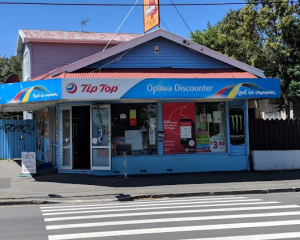When her son was being assessed for Attention Deficit Hyperactivity Disorder, Bex O’Malley realised she shared many symptoms that resulted in his diagnosis.
The realisation led to her own assessment and in 2019, at 35-years-old, she was diagnosed with ADHD.
“It was an awakening. I had an explanation now for why those three decades of my life seemed to be so much harder than for others around me,” said O’Malley.
“I always felt like I didn’t connect with others the same way.”
‘Neurodivergent’ is the umbrella term for people with different cognitive functions than neurotypicals.
It includes individuals with neurodevelopmental conditions such as autism spectrum disorder, dyslexia, and ADHD.
O’Malley is a senior sales specialist at Air New Zealand Cargo. After feeling the need to hide her ADHD from a previous employer, she described the move to a supportive, inclusive work environment at Air New Zealand as life-changing.
“I felt important. I felt like I had permission to take the time to get to know myself, and to then be able to let the business know what my needs are for them to get the best out of me.”
She says being open about her ADHD in her workplace has greatly aided in her ability to frame its discourse in a less negative way.
“Because my colleagues understand that my brain is wired differently, and how that manifests in certain behaviours – ADHD is not an excuse, it’s an explanation.”

“You see and hear so much in the media about the negative stuff, like the neurodivergent unemployment rates and the percentage of the prison population that have ADHD. But where are the stats on the number of successful people that are on the spectrum?”
O’Malley is training through education provider Gold Mind Academy to become an accredited ADHD coach to help others, particularly women who were diagnosed as adults, see their neurodivergence in a positive light.
She praises the te reo translations of neurodiverse conditions for making no mention of disorders or deficits.
The Māori word for ADHD, aroreretini, means “attention goes to many things”.
Takiwātanga, derived from “tōku/tōna anō takiwā” which means “my/his/her own time and space”, is used to describe autism.
While the implementation of well-being and mental health policies by many organisations has come a long way, O’Malley finds the poor understanding of neurodivergent conditions is a barrier to achieving true inclusivity.
“People historically see it as solely a behavioural thing - but it’s not. Neurodivergents have different chemical processes happening in their brains. It’s physiological as well, and there’s no ‘one size fits all’ formula as each individual’s needs are very different.”
She emphasises organisations should be adopting an intersectional lens when it comes to building neuro-inclusive policies, especially as future generations are poised to enter the workplace with a much stronger sense of awareness.
The formation of groups such as the Neurodiversity in Education Coalition are proof of the changing times.
The coalition, which comprises four national organisations that represent a large proportion of New Zealand’s neurodiverse youth, is advocating for more awareness of the rights of neurodiverse young people.
“There is diversity across all parts of human experience – gender, sexuality, ethnicity. Neurodiversity is just another one of those areas in which people are different,” said coalition leader Justine Munro.
“Gen Z is very clear on matters of identity, and they want their workplaces to actually recognise who they are across all of those dimensions and become environments where they can bring their full selves to work.”
Gen Z is people born between 1997 and 2012.
Employment advocate Ashleigh Fechney agrees with Munro.
“We want to bring our full selves to our employment, not just the parts that will benefit an employer,” said Fechney.
“We don’t want to be seen as a tool for profit. We want to be recognised for our intrinsic value as human beings with unique strengths and contributions.”
Fechney works closely with ADHD New Zealand, providing legal support on employment rights for members of the neurodivergent community.
She believes it’s mutually beneficial for employers to acknowledge intersectional handicaps and support individual growth of their employees, regardless of them being neurodivergent or neurotypical.
“When employees feel seen and supported, their engagement and productivity naturally increase.”
WHAT IS ADHD?
- ADHD is caused by a neurodevelopment delay to the prefrontal cortex of the brain, which results in increased difficulty in controlling and filtering attention, emotions, and behaviours.
- In New Zealand, an estimated 280,000 Kiwis have ADHD – that’s one in 20 people.
- While ADHD was once thought to be more prevalent in males, it is now believed the gender ratio is 1:1 and females are overlooked because their symptoms typically present as inattentive rather than hyperactive.
- ADHD usually runs in families. A quarter of all children with ADHD will have a parent with the condition.
By Jenn Loh













